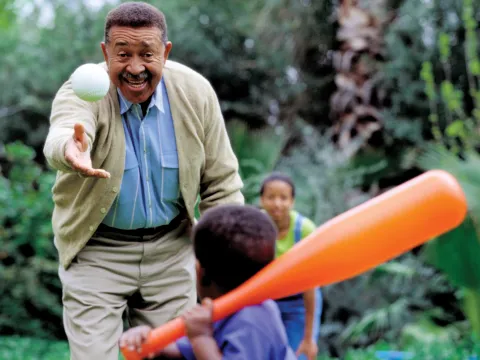- AdventHealth

For runners that love to train and compete, an off-season or scheduled down time may be difficult to plan and enjoy. Over the years (2020 excepted), the widespread availability of races has made it easy to fill your calendar so that you’re racing every month.
Although you may be resistant, time away from intense training will benefit your body and mind and can allow for long term health and success.
The Importance of Down Time
Down time or an offseason can mean different things depending on the type of runner you are. There’s no one size-fits-all definition that works for everyone. Some runners need a complete break and time away from running to feel rejuvenated, while others get reenergized with reduced mileage and intensity, and time to do other things.
Trevor Hicks, a physical therapist for AdventHealth, knows the importance of rest. “Runners can have a good balance for rest and preparation in the offseason by listening to their body. This is the time to take that extra rest day if you think you need it. Rest, live to run another day and be stronger and more bulletproof when the next season rolls around.”
Even though you may feel uncomfortable with the idea of taking a week or two off, a short break won’t have a dramatic impact on your fitness. Ideally you should plan your down time after a goal race, or during a time of year where you can use the extra time to find a little more balance in your life and focus on alternate activities you enjoy.
Your offseason can be a combination of time completely away from running, followed by a period of training where you prioritize easy running and reduce your training intensity. This will give your body a chance to recover more completely than during hard training, and reduces the mental fatigue that can accumulate from months of race-specific workouts.
Planning New Goals
Just because you’re running less or taking a break doesn’t mean you can’t continue to think about running. Your off-season is the perfect time to plan both short- and long-term goals for the months and years ahead. Your plan doesn’t have to be a concrete one, but it’s good to establish a general idea of what you’re hoping to accomplish.
Start with an evaluation of where you’re at and where you hope to be. Identify any weaknesses or problem areas from the previous season so you know what to focus on during your base training.
Were you injured? Do you need to get healthy and stronger? Do you want to tackle a new distance, new terrain or set a personal record?
Think about long range goals as well as shorter term ones that will act as stepping stones along the way.
Maintain a Base of Fitness
While taking a one- to two-week break from running can help you reset both mentally and physically, for most runners your off-season will last longer. After the break, what’s next? While some runners take longer stretches away from running, if you’re healthy it’s ideal to maintain a base of fitness so you aren’t starting from scratch as you head into a new season.
Most injuries happen during the rebuilding phase (especially if you are virtually starting over), so the more you can maintain some fitness and athleticism, the less likely you are to struggle with injuries as workouts intensify. The off-season is the perfect time to leave your technology behind and practice running by effort. Learn how it feels to run easy, regardless of what your pace may be.
While the off-season is an ideal time to reduce the intensity of your training, try not to drop your mileage too much. You might want to run one less day each week, or decrease the length of your regular runs, including your long run. But try to maintain some variety in your pacing. Even though you might not be doing long tempo runs or hard intervals, some short, faster efforts will help maintain your turnover.
Hicks underscores the importance of maintaining fitness and working on other areas of physical fitness. “Runners in the offseason can focus more on form, mobility and strength building. We need to ensure we not only have enough mobility in our joints but also the proper strength and endurance to withstand all those miles during the season.”
Focus on Your Priorities
How you plan your offseason can depend on your future goals. Once you have evaluated your priorities for the upcoming season, you can better execute your training plan.
Consider some of the following guidelines for varying goals:
Build Endurance
- Gradually build easy mileage during your base phase for aerobic development.
- Focus on general athleticism — this is an ideal time to work on strength and dynamic mobility
- Allow your improving fitness to bring renewed excitement
Get Faster
- If your priority is speed, add in neuromuscular work like running drills to increase your running economy without adding significant fatigue
- Keep some fun lighter workouts, such as fartleks and progression runs
- Strength train with heavier weights for power and explosiveness
- As you build, add in some introductory speed work with shorter repetitions and longer rest intervals
Get Healthy and Prevent Injuries
- Keep your runs short and easy at first and build your base slowly
- Cross-train to help build and maintain fitness, while reducing the impact of running more frequently
- Strength and dynamic flexibility work are essential — target your weak areas
- Get professional assistance from a physical therapist if you’ve had a significant injury
Your off-season should be a time of rest and rejuvenation — not something to dread. By planning how to approach your down time, you’ll see long-term benefits as you return to training and racing. For more information about how to reach your goals and recover safely, visit AdventHealth Sports Med & Rehab and speak with a sports medicine expert today.




